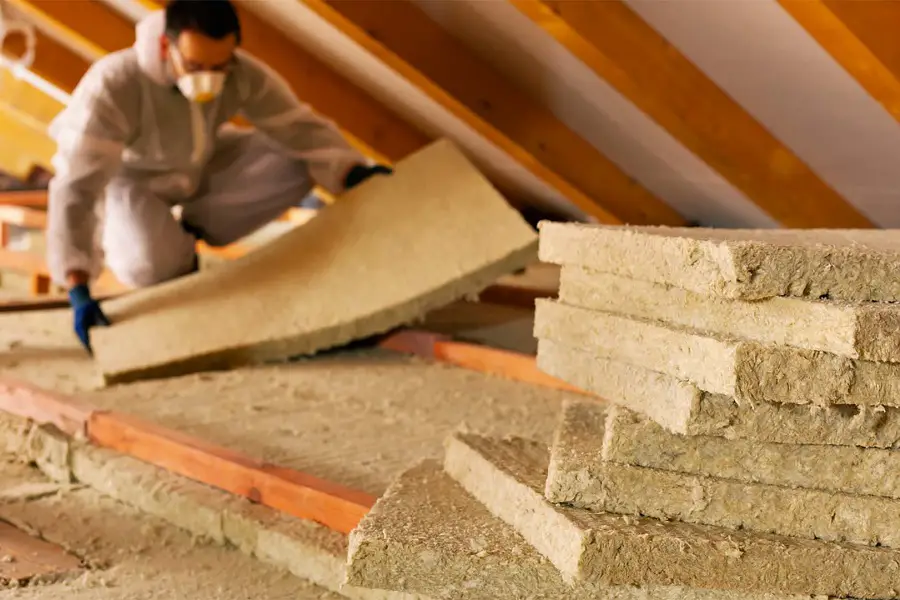According to the US Energy Information Administration, heating and cooling costs make up close to half of the average household’s energy bills.
When you consider the huge output of energy this creates, not to mention the cost to you as the homeowner or tenant, doing whatever we can to reduce this is imperative.
One of the simplest ways to ensure your home requires minimal cooling and heating energy usage is with insulation.
Insulation is a major part of any new home or renovation and when done right, it can have a significant and positive impact on how much energy your home HVAC bills are. Deciding what type of insulation is important though, with face and unfaced systems being the most popular choices.
What do the options of faced or unfaced insulation mean?
Faced insulation is the type used in walls, floors, and ceilings, and refers to any time the insulation paper is faced toward common living areas. Unfaced insulation is placed in attics and between two levels of a home, as it offers benefits to either side.
If you’re planning to renovate or build a new home from scratch and want to ensure the greenest and most efficient path, it pays to learn more about your insulation options.
With the right insulation in place, you’ll dramatically reduce your energy use, so we can help you learn more about what faced vs unfaced insulation means and which is the smartest choice for you.
Contents
What is Faced Insulation?

Faced insulation is a term used to describe a type of roll or batt insulation that has a facing layer on it.
The purpose of this layer is to protect against moisture and humidity, and it acts as a barrier to vapors as well. In addition to being used in walls and ceilings, it’s a popular choice for exterior insulation, thanks to its moisture retardant abilities.
This type of insulation is most commonly found on drywall to keep it free from moisture so that it doesn’t directly heat through the house, nor does it become damaged.
If you’re using an alternative type of insulation like spray foam, you might not require facing as it does all of the moisture repelling instead, but it can still be helpful.
What is Unfaced Insulation?

Unfaced insulation is another type of insulation you can use when there’s no need to have moisture control in an area.
Although people commonly think that unfaced insulation is the lesser choice, it’s simply not needed in every space of the house, and can be a cheaper alternative that’s still effective.
Unfaced insulation can be batt or paper as well, but with both sides being the same.
There’s no need to have a certain side with moisture protection and it’s used where you might need insulation on either side of it, like beneath two levels of a house or in an attic where people use the space above and below.
The Best Time to Use These Types of Insulation

To get the most out of your home’s insulation and prevent the use of excess HVAC systems, you’ll need to know when faced or unfaced is best.
The company installing your insulation will be able to direct you to the best option, but if you’re attempting to do it yourself, there are some ways you can figure out what’s right.
An R rating is an insulation rating scale that is used to determine how much insulation a certain area of space has. Different areas like living rooms or attics have their own rating, with an attic needing between R-49 and R-60 for those in colder climates.
People living in warm areas won’t need as much, with a rating of between R-30 to R-60 being better to deal with the hot temperatures.
Because the insulation is more important for regulating hot temperatures than for cold, it’s best to stick to the recommendations for these climates.
Unfaced batt insulation can help to improve the R rating of a space and might be ideal when moisture isn’t an issue, but it’s worth getting expert advice to figure out what’s best.
Related Questions
Having the right insulation installed in the correct areas at home can have huge benefits for your home’s energy use and costs.
By reducing your reliance on HVAC systems, you’re doing your part for the planet and your wallet, so find out some other ways you can make for more sustainable living at home with the right insulation choices.
What is the Best Insulation for Houses?
To get the correct R-rating needed for your home, fiberglass is one of the most common and popular choices for insulation.
This type is made with minuscule fibers of glass and can be applied as loose-fill insulation, or in batts and rolls. Fiberglass is also one of the most affordable types which further adds to its popularity.
What Are Green Insulation Options?
If you’re building a new home or renovating and want the most eco-friendly insulation materials used, there are a few options, although usually more expensive than synthetics. Cellulose, sheep’s wool, polyurethane foam are the best options.
What makes these such green choices is that they’re sourced from sustainable materials, have minimal impact to manufacture, and require only a small amount to be effective.
Can You Over Insulate Your House?
The goal of insulation is to provide a protective barrier that maintains a consistent temperature indoors.
However, it is possible to apply too much insulation so that it affects air quality. With over-insulation, you make it easier for moisture to get trapped inside which can lead to mold and deterioration.


